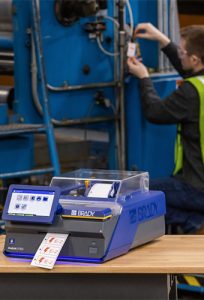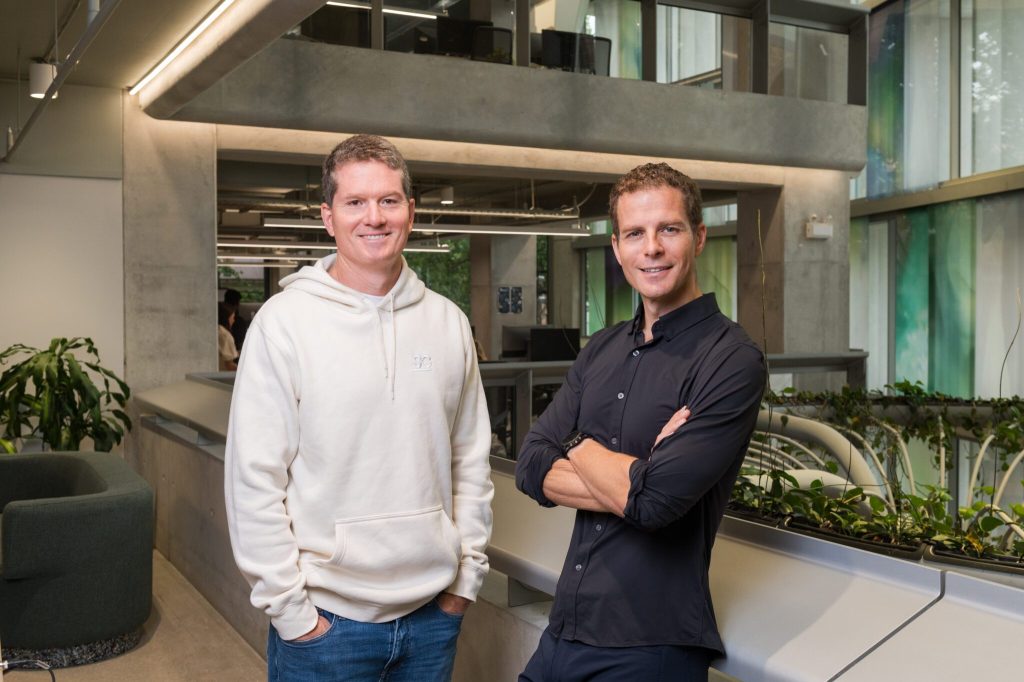
The Corporate Sustainability Reporting Directive (CSRD) is transforming how companies across the European Union report on their sustainability efforts. While its objectives—enhancing transparency and standardising reporting—are clear, the journey to compliance is anything but simple. From navigating complex reporting requirements to leveraging technology for streamlined processes, businesses face an array of challenges and opportunities.
Quentic powered by AMCS, is powering smart sustainability. In their upcoming webinar, Leveraging Technology for Effective CSRD Implementation Across Europe, they will dive deep into this critical topic. In this blog, the key themes of the webinar will be explored and will highlight why you don’t want to miss this opportunity to learn from real-world use cases.
Understanding CSRD Challenges
The CSRD introduces robust new requirements for corporate sustainability reporting, replacing the Non-Financial Reporting Directive (NFRD). Companies now need to meet detailed standards, including:
- Reporting on environmental, social, and governance (ESG) factors.
- Conducting a Double Materiality assessment to identify and prioritise sustainability topics.
- Aligning with the European Sustainability Reporting Standards (ESRS).
These requirements apply to a much broader range of businesses, extending to approximately 50,000 organisations across the EU. The timeline is tight, with many companies needing to start reporting on 2024 data as early as 2025.
The webinar starts with an exploration of these challenges, offering insights into how businesses in different sectors and regions are approaching them. You’ll hear anonymised use cases showcasing companies from the DACH region, the Nordics, Benelux, France, and the UK & Ireland, each navigating unique hurdles.
What You’ll Learn: Real-World Use Cases
While many companies are still grappling with how to begin their CSRD journeys, others are paving the way with innovative approaches. In the webinar, you’ll learn about real-world examples (anonymised for confidentiality) to illustrate the diverse experiences of businesses across Europe.
Here’s a glimpse of what to expect:
- Region-Specific Challenges: Learn how different businesses tackled reporting requirements for over their sustainability metrics, balancing regional and EU-wide regulations.
- Industry-Specific Approaches: See how these 5 European companies eliminated manual data collection and integrated sustainability into their core operations.
- Varying Stages in Sustainability Journeys: Explore how different sized organisations at various stages in their sustainability journeys tackle regulatory and compliance challenges.
These stories will provide actionable insights, whether your company is just starting out or refining an existing sustainability strategy.
The Role of Technology in CSRD Compliance
Technology is an essential enabler of CSRD compliance. From managing data collection to automating reporting processes, the right tools can save time, reduce errors, and provide strategic insights.
Learn more about:
- Data Management Solutions: Learn how companies are leveraging software to collect, organize, and analyse vast amounts of sustainability data.
- Streamlining Double Materiality Assessments: Discover how tech simplifies identifying, analysing, and prioritising material ESG topics.
- Improving Reporting Accuracy: See how technology ensures compliance with the ESRS and other frameworks.
Discover how technology has been a game-changer in achieving compliance for companies across the EU and has transform their CSRD journeys.
Beyond Compliance: Unlocking Strategic Value
One of the most exciting aspects of CSRD is its potential to drive strategic value beyond compliance. By meeting reporting requirements, companies can gain insights into:
- Customer and Stakeholder Expectations: Understanding sustainability priorities can improve customer satisfaction and strengthen stakeholder relationships.
- Market Trends: Aligning with ESG trends positions companies as leaders in their industries.
- Operational Efficiencies: Data-driven insights can uncover opportunities for cost savings and process improvements.
Gain insight into how businesses have turned compliance challenges into opportunities, using their CSRD efforts to drive meaningful change and competitive advantage.
Who Should Attend?
This webinar is tailored to professionals across various functions, all of whom play a critical role in driving CSRD compliance and sustainability efforts within their organisations. Whether you’re on the frontlines of sustainability initiatives or overseeing strategy at the executive level, this session offers valuable insights and practical solutions.
- Sustainability Leaders
As the champions of sustainability within your organisation, you are responsible for aligning your company’s efforts with evolving regulatory frameworks. This webinar will equip you with actionable insights to refine your CSRD strategy, navigate Double Materiality assessments, and enhance ESG reporting processes. Learn from real-world use cases to identify best practices and innovative approaches to overcome the challenges you face. - Finance and Compliance Teams
With CSRD expanding the scope of corporate reporting, your role in ensuring accuracy, consistency, and compliance is more important than ever. This webinar will provide you with a clear understanding of how to align your organisation’s reporting efforts with CSRD and ESRS requirements. Discover tools and methodologies to streamline data collection, improve reporting accuracy, and meet deadlines with confidence. - IT Professionals
Technology is at the heart of successful CSRD implementation. As an IT professional, you’ll learn how to leverage software solutions to manage large volumes of sustainability data, automate reporting processes, and integrate CSRD requirements into existing systems. This session will also explore how innovative technology can support company-wide sustainability initiatives and simplify complex processes. - Executives and Decision-Makers
For executives, CSRD compliance goes beyond regulatory adherence—it represents a strategic opportunity to drive organisational transformation, build stakeholder trust, and create long-term value. This webinar will help you understand the broader implications of CSRD compliance, identify opportunities for competitive advantage, and align sustainability reporting with your company’s overall goals.
No matter your role, if your organisation is preparing for CSRD compliance, this webinar is a must-attend. Gain insights, strategies, and tools to navigate the complexities of CSRD while positioning your company as a sustainability leader in the European market.
Why Register Now?
With the CSRD deadlines approaching, it’s crucial to start your journey today. Use this unique opportunity to learn from the experiences of companies across Europe, equipping you with the knowledge and tools to navigate your own path to compliance.
Here’s what you’ll gain:
- Practical Insights: Understand real-world challenges and solutions from anonymised case studies.
- Tech-Enabled Strategies: Discover how technology can simplify and enhance your CSRD efforts.
- Actionable Takeaways: Leave with concrete steps to advance your organisation’s sustainability reporting.
Join our hosts Rajiv Jalim, Global Head of Performance Sustainability at AMCS, and Zita Stefan, ESG Solutions Engineer at AMCS, as they guide you through the challenges of CSRD and how companies in the EU are tackling and overcoming those challenges with the help of technology.
Don’t miss out on this valuable learning opportunity.
Date & Time: Tuesday, 10th December
- 10:00 – 10:45 AM (GMT)
- 11:00 – 11:45 AM (CET)
Secure your spot today: Register Now!
Get Ready for the CSRD Journey
The journey to Corporate Sustainability Reporting Directive (CSRD) compliance is more than just a regulatory requirement—it’s a chance to reshape how your organisation approaches sustainability. While the road may be challenging, it offers an unparalleled opportunity to enhance transparency, build trust with stakeholders, and position your company as a leader in the evolving sustainability landscape.
Meeting the CSRD’s rigorous standards requires a combination of strategic planning, cross-departmental collaboration, and the right tools. Whether you’re grappling with Double Materiality assessments, data management, or aligning with the European Sustainability Reporting Standards (ESRS), preparation is key. The challenges can seem daunting, but they also provide a pathway to meaningful organisational change.
Join us for this essential webinar, Leveraging Technology for Effective CSRD Implementation Across Europe, to gain the knowledge, insights and tools you need to succeed.
Register now and take the first step toward mastering CSRD compliance.
 Water, chemicals, abrasion? No problem. And with LabelSense™ technology working behind the scenes, setup is automatic and takes seconds. That means anyone can print just about anything, from sharp barcodes and regulatory labels to custom signs and tags with photos and logos.
Water, chemicals, abrasion? No problem. And with LabelSense™ technology working behind the scenes, setup is automatic and takes seconds. That means anyone can print just about anything, from sharp barcodes and regulatory labels to custom signs and tags with photos and logos. technology enables printer, materials and inks to talk to each other for automatic part recognition, setup and adjustments
technology enables printer, materials and inks to talk to each other for automatic part recognition, setup and adjustments The ability to print your labels on-site enables you to quickly respond to any identification need and can eliminate all waiting on label deliveries. Brady’s printing solutions enable on demand printing of the most specialised cable, component, product, safety and facility sleeves, labels and signs. Please have a look at our “Do-it-Yourself printing” brochure and get inspired.
The ability to print your labels on-site enables you to quickly respond to any identification need and can eliminate all waiting on label deliveries. Brady’s printing solutions enable on demand printing of the most specialised cable, component, product, safety and facility sleeves, labels and signs. Please have a look at our “Do-it-Yourself printing” brochure and get inspired.












 Spotting Genuine Impact – Data Transparency
Spotting Genuine Impact – Data Transparency Third-Party Certifications
Third-Party Certifications Lifecycle Assessments
Lifecycle Assessments AI and Blockchain for Supply Chain Transparency
AI and Blockchain for Supply Chain Transparency Stakeholder Engagement
Stakeholder Engagement


